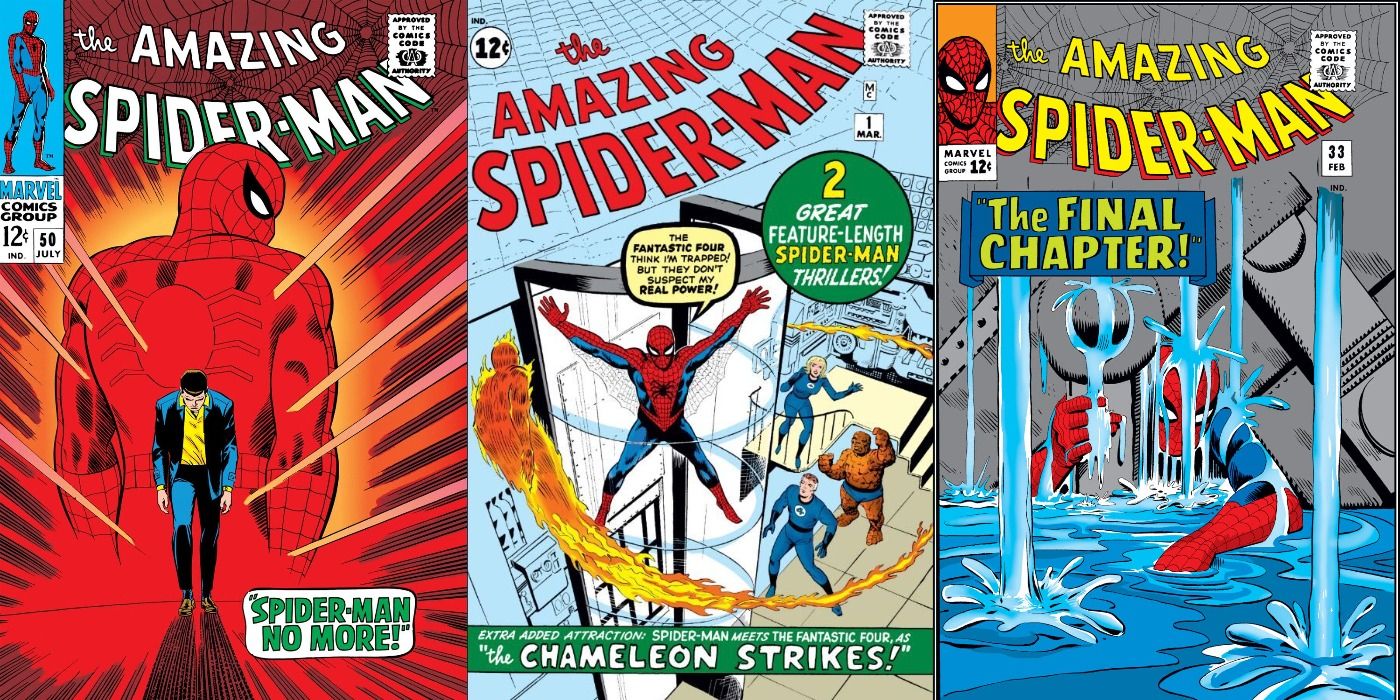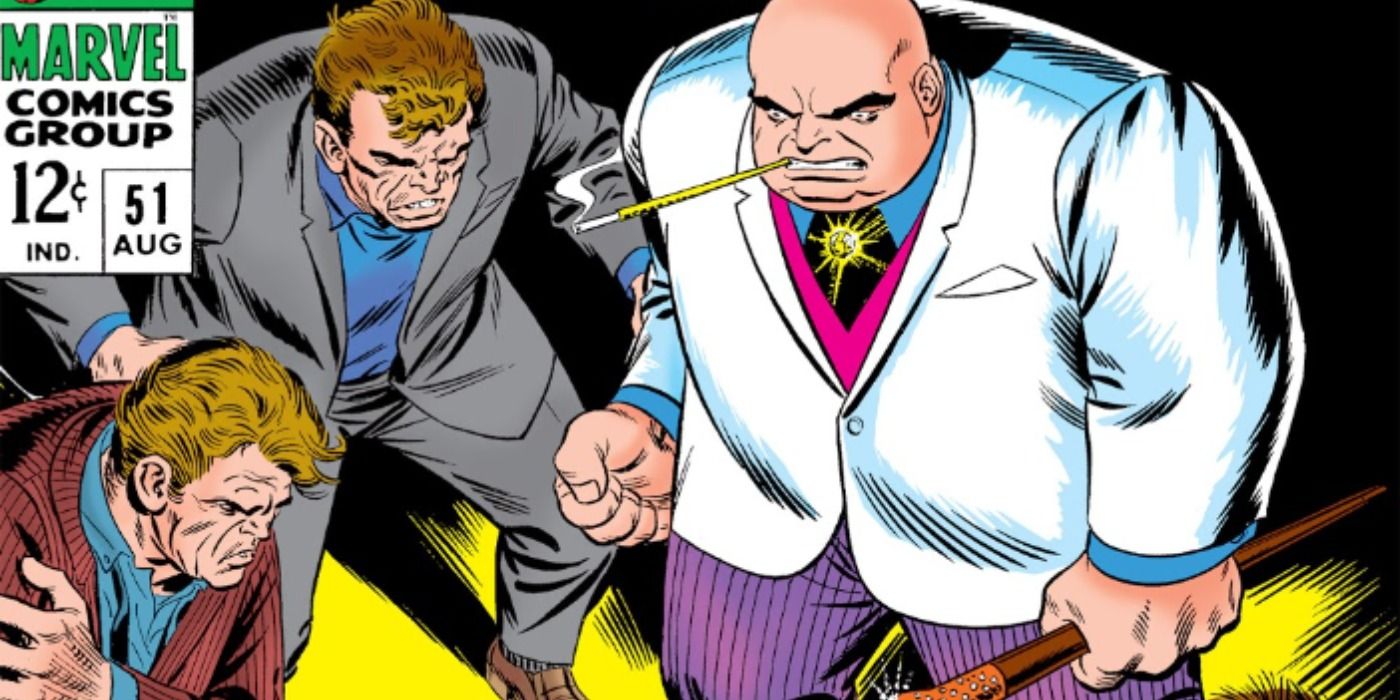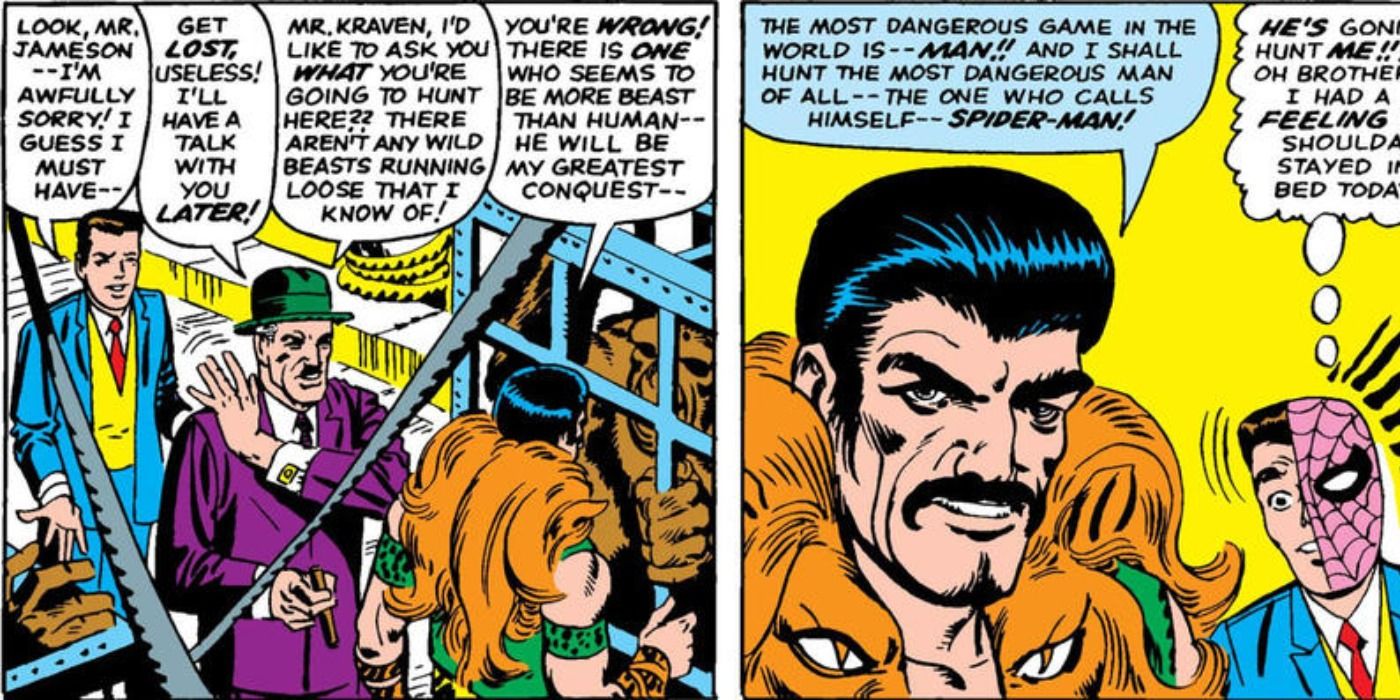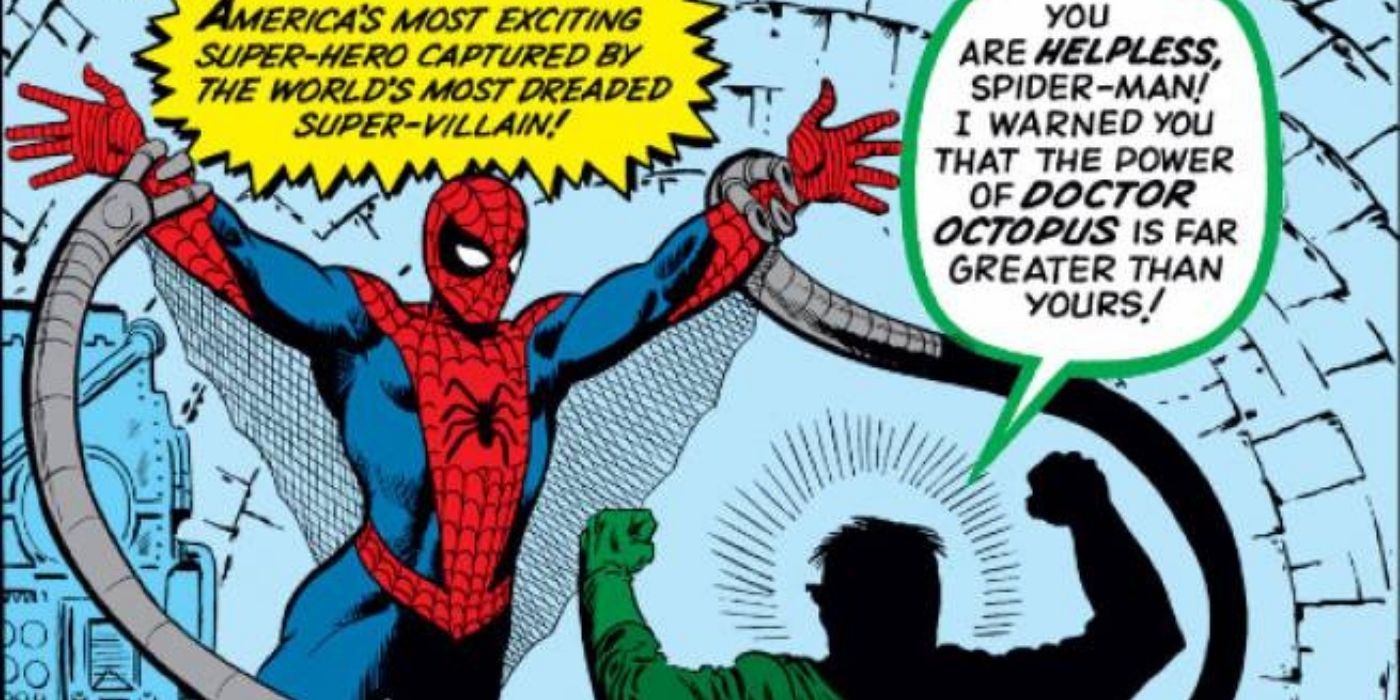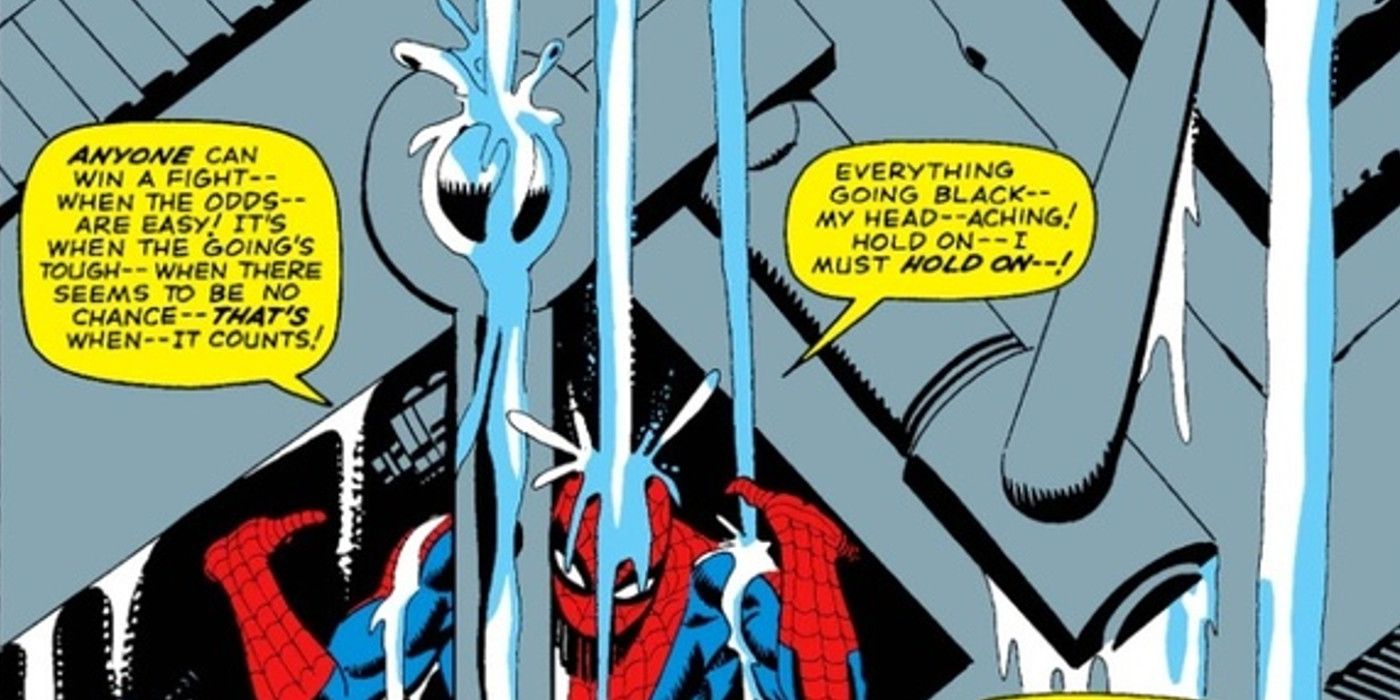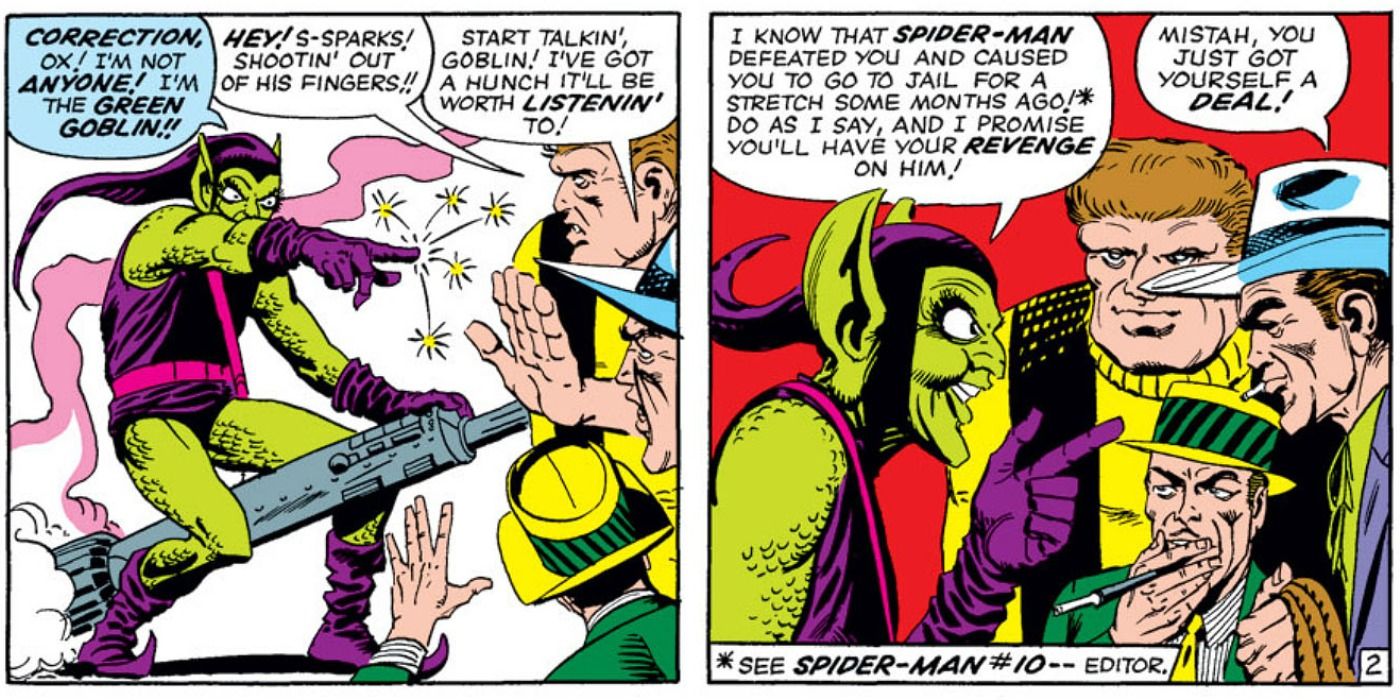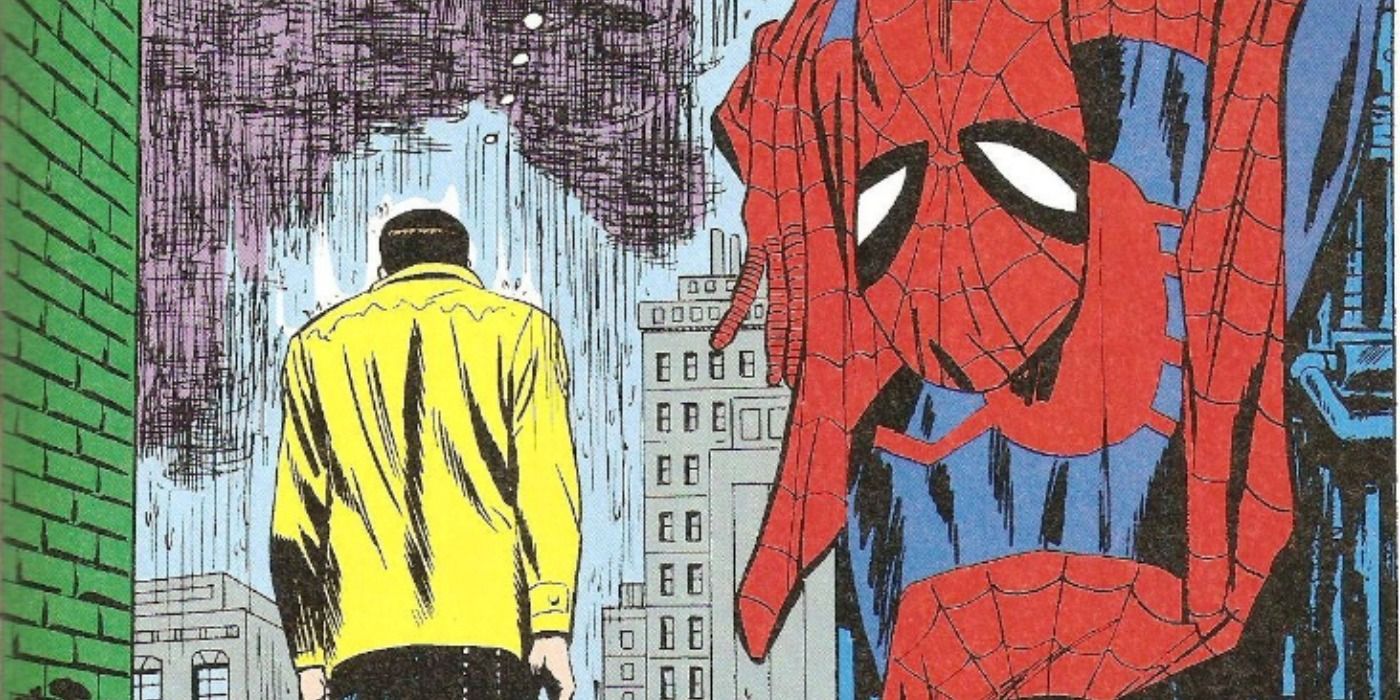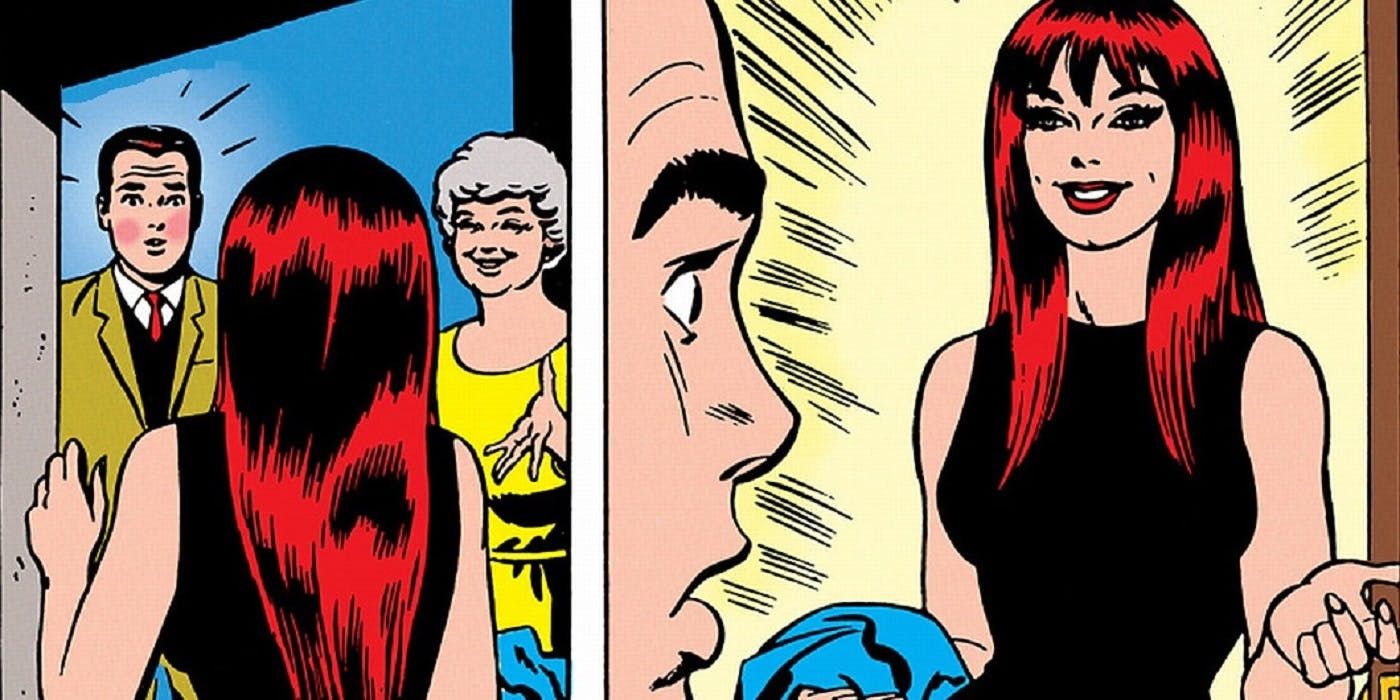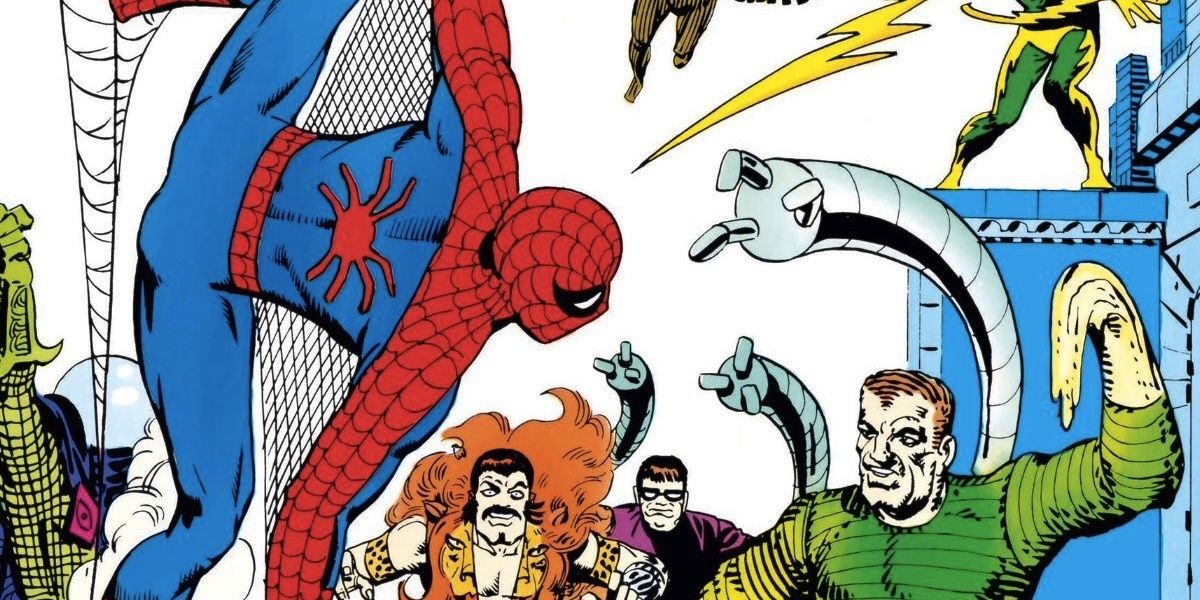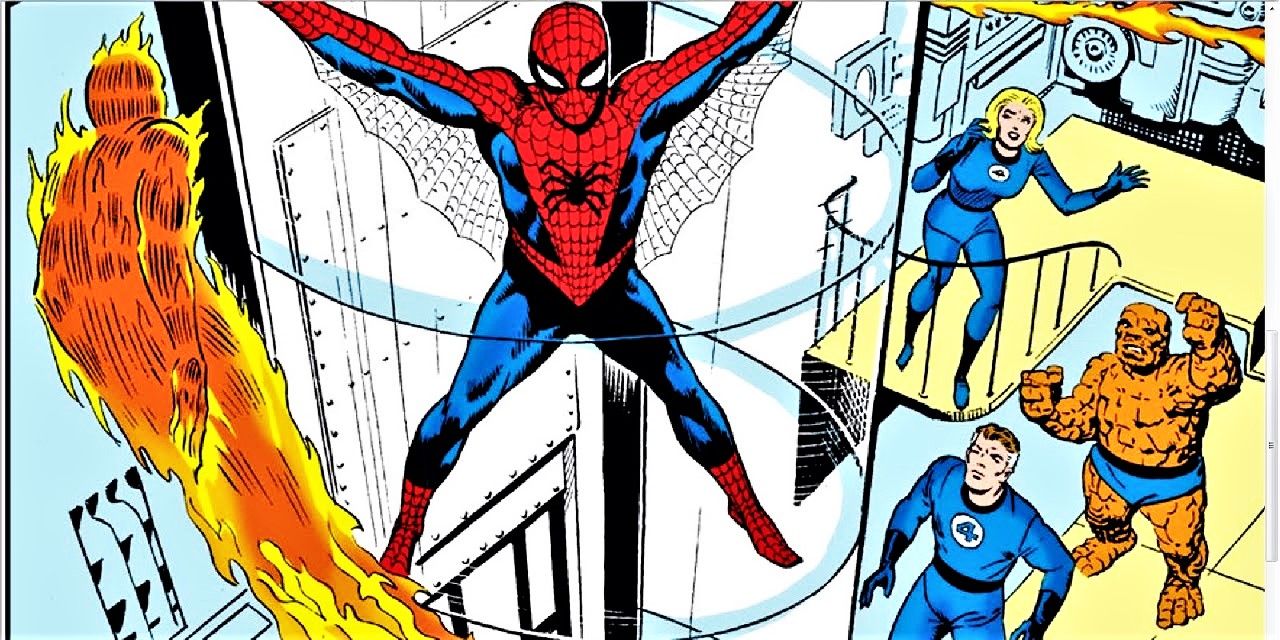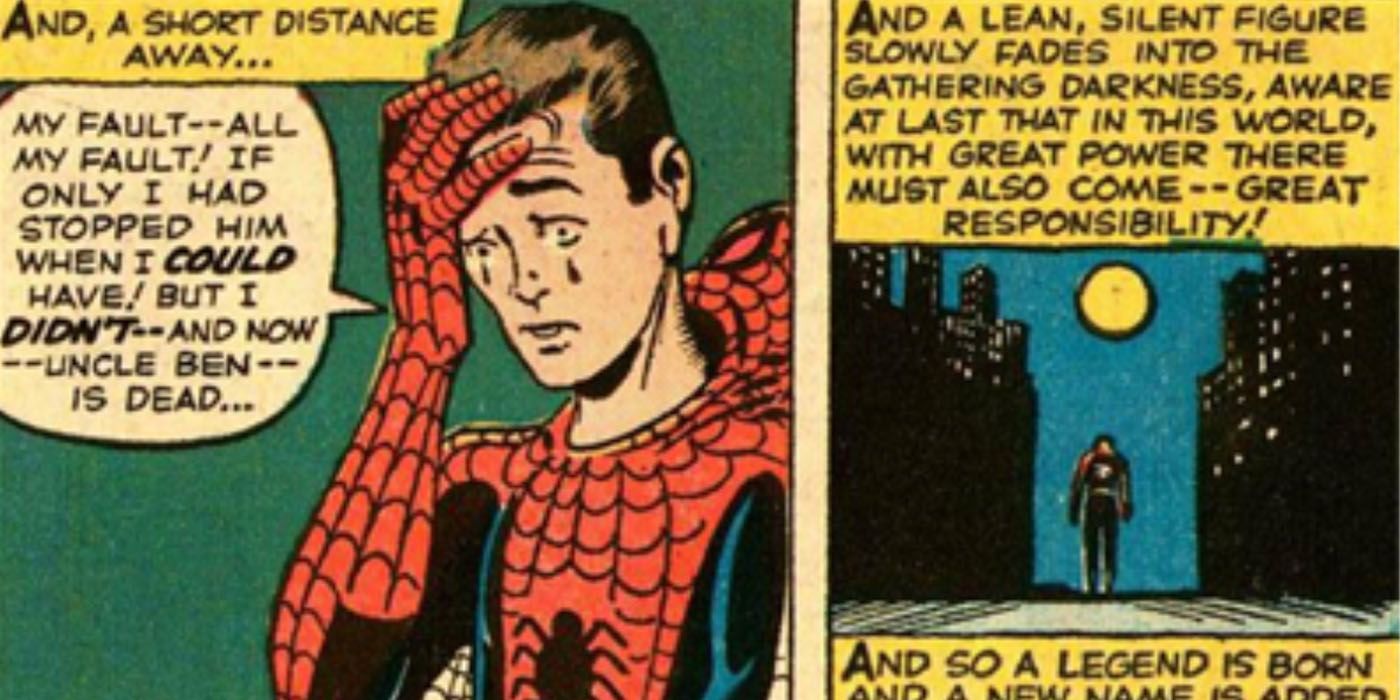Spider-Man: No Way Home is the most successful Spider-Man movie ever, and that is thanks in part to how it draws on the rich tradition of the beloved superhero not just from earlier live-action movies but from Marvel Comics. The Wall-Crawler debuted 60 years ago in Amazing Fantasy #15, and some of the best Spider-Man comics of the 1960s helped make the new movie the success it is.
Virtually everything about Spider-Man as fans know him today is established in these early issues, beginning in 1962. His classic origin story, his first encounter with Mary Jane Watson, and his first fight with the Sinister Six all occur in this landmark period. Some of the best issues of the '60s also hint at his onscreen future, including possible live-action encounters with the Kingpin.
The Amazing Spider-Man #51
Comic book fans know Kingpin is a major Spider-Man villain and his first full appearance is one of the best issues of the '60s. The Amazing Spider-Man #51 establishes the iconic look and threat of Kingpin, minting an instant fan favorite who would trouble Peter Parker for decades.
Though this issue is relatively low stakes given how dangerous Kingpin would become in the future, this 1967 issue establishes much of the Kingpin's ethos. He's out to take over New York City and is only stopped by the intervention of Spider-Man.
The Amazing Spider-Man #15
The Amazing Spider-Man #15 introduces fans to Kraven rhe Hunter for the first time. This exciting issue from writer Stan Lee and artist Steve Ditko excels in giving fans something unexpected in the big game hunter who sets his sights on a new target: Spider-Man.
Kraven seeks out Spider-Man, inspired by his half-brother the Chameleon, the first of what would be many villain team-ups in the book. This issue from 1963 is one of many potential comic book storylines the upcoming Kraven the Hunter movie could draw on.
The Amazing Spider-Man #3
The Amazing Spider-Man #3 from 1963 is a seminal issue and one of the best of the era as it introduces Doctor Octopus. Doc Ock is easily one of Spider-Man's best comic book villains and this issue establishes much of his iconic persona.
The iconic art by Steve Ditko creates an instant visual icon in Doctor Octopus with his four mechanical arms, and much of his classic origin would be adapted into his live-action version, both in the Sam Raimi movies and now the MCU.
The Amazing Spider-Man #33
The Amazing Spider-Man #33 features one of the most iconic covers in Spider-Man history and one of the most iconic sequences. The scene where Spider-Man struggles to lift the heavy machinery crushing him has become synonymous with his strength and determination.
The scene also inspired a moment in Spider-Man: Homecoming, when the Vulture traps Peter Parker under an avalanche of machinery. He has to force himself to keep fighting and lift his way out of it, just as he did in this epic comic.
The Amazing Spider-Man #12
The Amazing Spider-Man #12 from 1964 is the first appearance of the Green Goblin and as such an essential issue from the period. Comic book fans know Green Goblin would become one of Spider-Man's deadliest villains, but here, he's less the diabolical villain they know.
The issue is of great interest not only for the character's iconic debut but also the unusual way he was introduced. He initially seems a random criminal with no connection to Norman Osborn, who he would later be revealed to be.
The Amazing Spider-Man #50
The Amazing Spider-Man #50 is a landmark issue with an all-time cover by one of the best Spider-Man artists ever, John Romita Sr. In this issue, Peter Parker does the unthinkable and walks away from being Spider-Man.
The iconic image of his throwing his suit in the trash in an alley would be replicated on screen in the Sam Raimi movies, and remains one of the most powerful images not just from the '60s but the entire history of the character in comic books.
The Amazing Spider-Man #42
The Amazing Spider-Man #42 is one of the best issues of the 1960s for finally introducing one of the most iconic characters in comics: Mary Jane Watson. Mary Jane makes perhaps the greatest entrance in superhero comics, proclaiming, "Face it, tiger... you just hit the jackpot!"
Mary Jane had been teased for several years, suggested as a possible romantic interest for Peter Parker from issue #25. Here she enters Peter's life in dramatic fashion and she's been an integral part of the Spider-Man story in every medium ever since.
The Amazing Spider-Man Annual #1
Spider-Man's very first annual from 1964 is one of the best issues not just of the '60s but of all time as it introduces the Sinister Six. This team of supervillains has hounded Spider-Man ever since in the comics, animation, and now in some respects the movies.
The team includes most of Spider-Man's earliest and iconic foes including Mysterio, Vulture, Kraven the Hunter, Doctor Octopus, Sandman, and Electro. He is forced to fight them one by one in a challenging gauntlet through New York City.
The Amazing Spider-Man #1
The Amazing Spider-Man #1 is one of the most important comics ever. It's also a thrilling introduction to Spider-Man and an excellent showcase of how this new character would operate in the Marvel Universe, thanks to a guest appearance by the Fantastic Four.
Spider-Man wants to join the premier superhero team but runs into some objections. He nevertheless proves his worth as a hero and makes lifelong allies and friends that would continue to pay dividends for fans for decades to come.
Amazing Fantasy #15
Amazing Fantasy #15 is the first appearance of Spider-Man and the origin of the iconic superhero. The classic story by Stan Lee and Steve Ditko lays out all of the now-familiar beats, including how Peter got his powers, the death of Uncle Ben, and one of the most famous lines ever.
The story ends with the now-iconic quote from Uncle Ben, "With great power there must also come -- great responsibility." This quote has become synonymous with Spider-Man and is cited in every movie franchise, including the MCU, where it was uttered by Aunt May.

